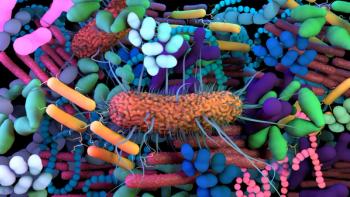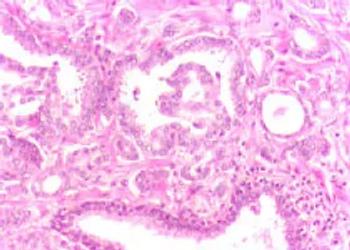
Experimental Patch Could Make At-Home Melanoma Diagnosis Easy as COVID Test
Researchers from the University of Michigan have developed a skin patch that was able to accurately detect melanoma in tissue samples from mice.
Researchers at the University of Michigan have developed a silicone patch that could make melanoma screening as simple as an at-home COVID-19 test, with no blood draw or biopsy required.
The experimental device, called the ExoPatch, successfully distinguished between melanoma and healthy skin in mouse tissue samples by detecting cancer-specific markers in the skin’s outermost layer. The findings, published in Biosensors and Bioelectronics, are a first for a patch designed to capture disease-specific exosomes from fluid under the skin, said Sunitha Nagrath, Ph.D., the Dwight F. Benton Professor of Chemical Engineering at the University of Michigan and co-corresponding author of the
“A fair-skinned person with moles must go to the doctor about every six months to send off a biopsy to see if they’re malignant or benign,” Nagrath said in a
Melanoma remains the deadliest form of skin cancer, though when detected early, nearly all cases can be successfully treated through surgical removal. Once the cancer spreads beyond the skin, however, five-year survival rates plummet to just 35%. Currently, dermatologists rely on visual inspection followed by biopsies to confirm suspicious moles, but trained clinicians catch only about 70% of melanomas through visual examination alone.
The ExoPatch works by capturing exosomes, or tiny packages released by cells that contain genetic material and proteins. Cancer cells release distinctive exosomes that can signal the presence of disease. The patch’s microneedles, measuring just 0.6 millimeters long with tips less than 100 nanometers wide, penetrate only the epidermis without reaching blood vessels or causing pain.
“The star-shaped needles make puncture easier and less painful, but they are so small that they only go through the topmost layer of the skin, the epidermis, and do not draw blood,” Nagrath said.
The needles are coated with a special gel containing a protein that binds to a specific marker that appears on the outside of cancer exosomes but rarely on healthy cells. After pressing the patch against skin for 15 minutes, users dissolve the gel in an acid solution to release captured exosomes. The solution is then applied to a test strip that displays two lines for a positive result or one line for negative.
In laboratory testing, the ExoPatch captured about 11 times more exosomal protein from melanoma tissue compared with healthy tissue, demonstrating its ability to specifically target cancer-related markers and prevent false-negative results.
Although the current study validated the concept in animal tissues, several steps remain before the technology reaches consumers. Researchers haven’t yet established clinical accuracy rates, such as how often the test correctly identifies cancer or correctly rules it out. These metrics will need to be determined through human trials before the device can be approved for home use.
The research team plans pilot studies in humans followed by clinical trials to establish safety and effectiveness. The gel coating could potentially be modified to detect other solid tumor cancers, including lung, breast, colon, prostate and brain cancers. If proven in clinical studies, such a patch could complement routine skin checks and ease the demand for in-office biopsies.
The patch was developed with funding from the National Institutes of Health.
Newsletter
Get the latest industry news, event updates, and more from Managed healthcare Executive.






















































